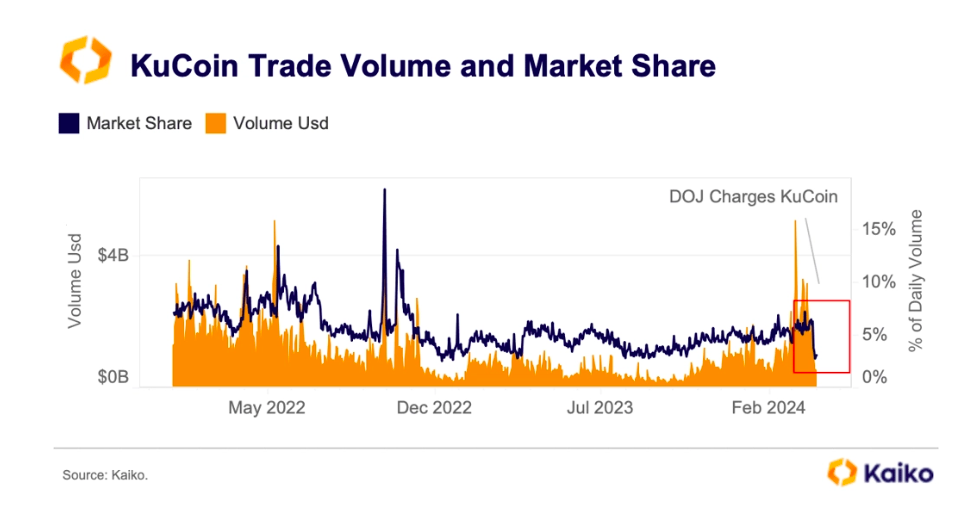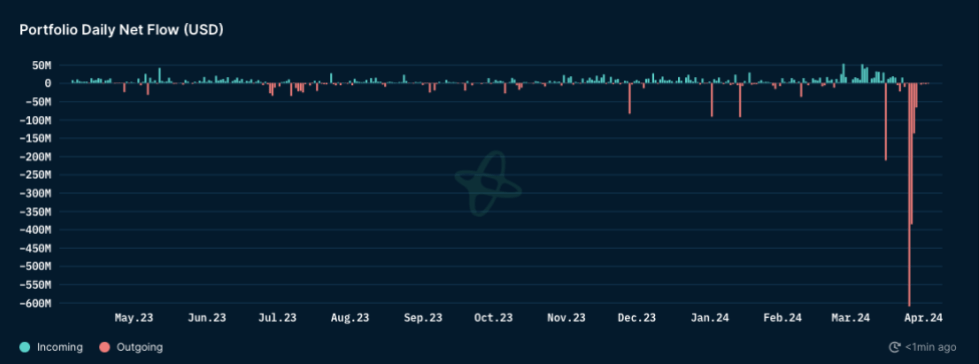
For the past week, crypto exchange KuCoin has been at the center of a regulatory tornado. The charges filed last Tuesday include breaking several regulations and violating anti-money laundering (AML) laws in the United States.
A recent report reveals that the exchange has faced significant challenges after the news of the lawsuits broke out. Despite efforts to stop it, KuCoin’s users are flocking to other exchanges, resulting in massive outflows for the platform.
The Charges Against The Global Crypto Exchange
On March 26, the US Department of Justice (DOJ) and the Commodity and Futures Trading Commission (CFTC) filed back-to-back lawsuits against global crypto exchange KuCoin.
The DOJ charged KuCoin and two of its founders, Chun Gan and Ke Tang, with deliberately failing to maintain an adequate AML program. Additionally, KuCoin was accused of “operating an unlicensed money transmitting business.”
As previously reported, the CFTC filed a complaint against the crypto exchange for illegal dealing in “off-exchange commodity futures transactions and leveraged, margined, or financed retail commodity transactions.”
Moreover, the exchange was accused of failing to “register with the CFTC as a futures commission merchant (FCM)” and multiple violations of the Commodity Exchange Act (CEA) and CFTC regulations.
As a result, the price of KuCoin’s token (KCS) dropped 10% just hours after the news broke out. Since then, KCS dipped 13.1% in the past week and 18.9% from its price 30 days ago.
At writing time, the token is trading at $10.633, a modest 0.6% increase in the past 24 hours.
KuCoin Token performance in the 7-day chart. Source: KCSUSDT on Tradingview.com
It’s worth noting that the blockchain research and analytics firm Kaiko found during its research of KuCoin’s charges impact that:
Despite the DOJ’s claims, there is no direct interaction between KuCoin and Tornado Cash on the Ethereum blockchain. However, all of the funds stolen from KuCoin’s hack in 2020 have been “privatized” using Tornado Cash, representing a significant amount of ETH.
How Did The CFTC And DOJ Indictments Impact KuCoin?
KCS’s price isn’t the only thing affected by the regulatory crackdown on the crypto exchange. Kaiko revealed that the CFTC and DOJ charges had a massive and immediate impact on the crypto exchange.
KuCoin’s numbers have plummeted in several metrics over the past week despite being one of the fastest-growing exchanges this year. Per the report, KuCoin’s volume and market share plunged since March 26. The daily volume dropped from $2 billion to $520 million, a 74% decrease.

KuCoin’s trade volume and market share decreasing after the Lawsuits. Source: Kaiko
Moreover, its market share halved from 6.5% to 3%. The exchange unsuccessfully attempted to stop the daily volume drop by offering a $10 million Airdrop plan.
Kaiko’s data revealed that the exchange’s outflows significantly grew after users transferred their funds to other centralized exchanges (CEXs) like Binance, OKX, Coinbase, MEXC, and Gate.io. As part of their efforts to safeguard their funds, users also sent assets to on-chain wallets directly.
On March 26, the total outflows outpaced KuCoin’s inflows. More than $600 million, primarily in USDT and ETH, were withdrawn from the change after the lawsuit news.
The research platform highlighted that these numbers only contain the on-chain transactions from KuCoin wallets and other exchanges or wallets, excluding transactions between KuCoin addresses.

KuCoin’s daily net flows. Source: Nansen
According to data from the on-chain analytics platform Nansen, the assets held by the exchange fell from approximately $6 billion to $4.82 billion. At writing time, KuCoin’s total outflows account for nearly $1.2 billion.
Featured Image from Unsplash.com, Chart from TradingView.com





Be the first to comment